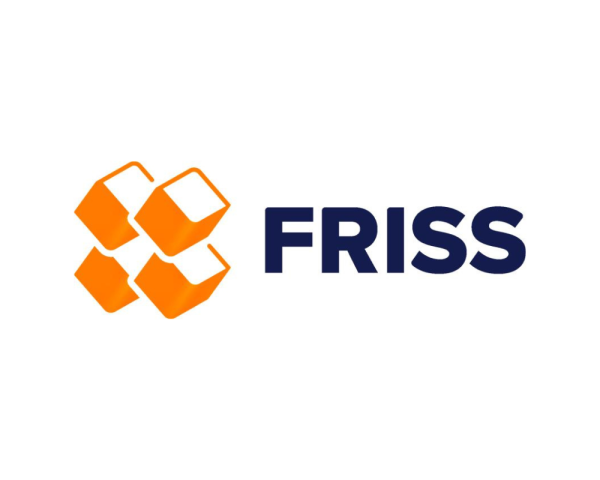In a recent conversation, Paul Carroll, editor-in-chief of Insurance Thought Leadership, spoke with Jeroen Morrenhof, CEO and co-founder of FRISS, about the multifaceted issue of insurance fraud and the strategies being employed to combat it, including the crucial role of ecosystems and the company's significant partnership with Verisk. What follows is a transcript of that conversation, edited for length and clarity.
Paul Carroll:
What is the importance of attacking insurance fraud, both for insurance carriers and for customers, who have to pay a sort of "fraud tax" if fraud isn't addressed?
Jeroen Morrenhof:
Insurance is an industry built on trust. Customers trust insurers to make them whole again, and this trust allows people and companies to take risks, enabling the economy to flourish. However, not everyone can be trusted, and those who defraud the insurance industry undermine this essential trust relationship.
Insurance fraud has multiple implications. It undermines the perception of insurance and increases the "fraud tax" or "premium tax" that every consumer pays. Studies estimate that billions of dollars and euros are lost to fraudulent claims. Every consumer is paying hundreds of dollars to cover the cost of these claims. This is a significant issue for the industry.
Fraudulent behavior takes advantage of the trust between insurers and customers, and it's a two-way street. Misrepresentation can occur from both the insurer to the customer, such as in the fine print, and from the customer to the insurer.
Paul Carroll:
Why are ecosystems so important in the fight against fraud?
Jeroen Morrenhof:
Ecosystems are key in tackling the complex issue of fraud. At FRISS, we have invested heavily in understanding various fraud schemes and developing methods to detect, investigate and prevent them. However, many other companies also specialize in this space, each with their own focus and expertise.
We work with numerous partners, including hundreds of data vendors connected to our platform across the 47 countries we operate in. These vendors provide data specific to countries, states or even counties, as well as global data. We always strive to find the best data sources for compliance lists, credit scoring, weather data and more.
Another critical part of our ecosystem is core solutions like Guidewire, Duck Creek, Sapiens and others. These solutions provide essential services to their customers for policy, claims and billing. We aim to integrate seamlessly with these core solutions through APIs and iFrames, allowing their customers to leverage our capabilities, such as claims automation, as part of their product.
This integration is a significant aspect of digitalization, straight-through processing and further automation of processes. It must be real-time, integrated, seamless and native. By sticking to our sandbox and integrating with core solutions, we enable their customers to benefit from our fraud fighting capabilities within their existing systems.
Paul Carroll:
What is the significance of your arrangement with Verisk for FRISS and the insurance industry as a whole?
Jeroen Morrenhof:
Our arrangement with Verisk is very significant, and not just for FRISS.
When I moved to the U.S. six years ago, FRISS had zero customers there and had just made our first hire. We knew that the most important predictor of future fraud is historical claims data, so accessing this data source was crucial for us to begin our work in the U.S. market. Now, being the first insurance fraud vendor allowed to incorporate Verisk's ClaimSearch data into our product is a huge milestone.
This integration provides numerous benefits, but most importantly, it greatly enhances our ability to predict and prevent future fraud.
Paul Carroll:
It seems to me that FRISS is taking the sort of platform approach that I’ve seen work so well for IBM, Microsoft, Google, Apple and others in my days covering the computer industry. Every new capability that gets attached to the platform makes it more powerful, which attracts others, which makes it more powerful, which… and so on.
Jeroen Morrenhof:
Yes, that is correct. By integrating multiple data sources, including policy and claim history, fraud databases and other relevant information, we create a holistic view that enables our customers to make informed decisions quickly and efficiently. This comprehensive perspective allows our customers to determine whether a case can be automated or requires closer examination. If further investigation is needed, our platform provides insights into the reasons behind the decision, potential fraud scenarios and the best next actions based on historical success rates.
By consolidating all the information into a single, unified view, we eliminate the need for customers to navigate various separate reports or data points. This streamlined approach really orchestrates and empowers them to make swift, confident decisions to either proceed or investigate further, ultimately providing significant value to their operations.
Paul Carroll:
What are your plans for expansion in the U.S. market now that you have established a presence here?
Jeroen Morrenhof:
Over the past six years, we have grown from zero to over 40 customers in the U.S. Our team has expanded from our first hire to around 30 to 40 people in the country. I recently made a key addition to my executive leadership team, hiring Yogesh Sapre as the president for the Americas. He brings valuable experience from his previous role at Duck Creek and will be responsible for driving further growth in the region. This partnership, along with Yogesh's hire, will be crucial in enabling our continued growth in the U.S. market.
Paul Carroll:
What does the competitive landscape look like in the fraud detection space, and how does collaboration factor into tackling fraud?
Jeroen Morrenhof:
We're certainly not the only ones trying to support the industry in combatting fraud. A lot of relationships used to be more competitive, but now we’re more collaborative, friends who are doing what’s best for the industry.
One of the bigger competitors is the "do-it-yourself" approach. It's fairly common for senior data scientists or heads of data and analytics teams to believe they can build their own fraud models. While they may initially create a model that performs, maintaining it and integrating it with third-party data, network analytics and so on can be very challenging.
Beyond our technology, we provide value by benchmarking and sharing intelligence with our customers. We compare their performance to peers in their state or across the states they're active in, identifying areas where they excel or underperform. We then offer suggestions for improvement, which may involve changing processes, adding technology or data or adjusting configurations to better detect specific fraud schemes.
Our focused approach sets us apart from broader analytics companies that offer capabilities across the entire value cycle. We believe in being the best in our specific sandbox, providing a dedicated solution for fraud detection and prevention.
Paul Carroll:
What are some specific examples of how your customers have used your fraud detection system to uncover fraud and improve their processes?
Jeroen Morrenhof:
Our fraud funnel allows us to monitor the entire fraud detection process for our customers. We track the number of claims, referrals, accepted referrals by investigators and the results of those investigations, which could be a withdrawn claim, partial withdrawal or proven fraud. All of this data is captured in our case management system, which investigators use to document their findings. This information then feeds back into our claims scoring and underwriting processes, continuously enhancing our fraud detection capabilities.
Across this process, we see a wide variety of fraud scenarios in both commercial and personal lines. Our customer success managers, who typically have extensive experience in the field as heads of SIU or at various insurance companies, work closely with our customers to share best practices and strategies for investigating these different types of fraud cases based on their own expertise and what has worked well for other customers.
Paul Carroll:
How is the fraud landscape changing, and what are the key drivers behind these changes?
Jeroen Morrenhof:
The fraud landscape is constantly evolving, driven by various factors such as economic trends and technological advancements. During times of financial hardship, such as the COVID-19 pandemic or periods of high inflation, some individuals may resort to insurance fraud to make ends meet, justifying their actions to themselves.
Technological trends also play a significant role in the changing fraud landscape. The development of deep fakes and other AI-generated material has made it easier for fraudsters to create false statements, manipulated images and other deceptive materials to support fraudulent claims.
These advancements make it increasingly difficult to detect and prevent fraud. For example, in the past, investigators could identify fraudulent claims by finding images downloaded from the internet, such as expensive watches or paintings. However, with the advent of AI-generated content, these images are now unique and harder to detect. Additionally, fraudsters can use AI to manipulate images of genuine damages, such as adding a broken side panel or windshield to a vehicle, to inflate the claim amount. Addressing these evolving challenges is one of the additional use cases that FRISS is working on in collaboration with Verisk.
Paul Carroll:
Is there anything else you'd like to add about insurance fraud in general, or FRISS in particular?
Jeroen Morrenhof:
There's so much more to discuss when it comes to fraud in the insurance industry. If I were to focus on one aspect, it would be the various partnerships we have at FRISS. Currently, we are integrating ClaimSearch data into our product, which is just the first of 15 identified use cases with Verisk. Another exciting use case involves image analytics and the pooling of images across carriers.
Our partnership with Verisk is particularly promising. Together, we aim to provide additional use cases that will make insurance processes more efficient across the entire value cycle. This includes streamlining fraud case filing to authorities, improving reporting and enabling more straight-through processing. While we have three use cases live at the moment, I'm very excited about the 12 that will follow soon.
Paul Carroll:
In my opinion, insurance fraud is simply evil, and fighting against it is doing God's work. I sincerely hope that this endeavor succeeds and that we can help raise awareness about this issue.
You can watch a quick demo of the Verisk ClaimSearch integration here: Verisk (friss.com)
Sponsored by ITL Partner: FRISS











